Restitutions 2012 to 2019
2019
Jewish Community Vienna
The University Library of Paris Lodron University Salzburg restituted three books to the Jewish Community of Vienna on March 12, 2019, in the auditorium of the University Library. Among them is a rare early Hebrew print, printed by a Christian publisher in Venice in 1519 – exactly 500 years ago. Hanna Feingold took over the books on behalf of the Jewish Community from the Rector of the University, Univ. Prof. Dr. Heinrich Schmidinger, and the Director of the University Library, Dr.in Ursula Schachl-Raber.Dr. Moritz Güdemann (1835-1918), Chief Rabbi in Vienna, was an important Jewish scholar and author of numerous scientific works, especially on Jewish history. Throughout his life he was a representative of a traditional interpretation of Judaism, combined with unwavering loyalty to the Austrian imperial house. In 1897, the Emperor awarded Güdemann the Knight’s Cross of the Order of Franz Joseph for his numerous services in the religious, cultural and social spheres of Vienna – for example, he founded a people’s kitchen for the needy of Jewish and Christian denominations. He was in contact with numerous important personalities of his time, including Theodor Herzl, whose theories on Zionism, however, he eventually openly rejected. Güdemann strove to counter the growing anti-Semitism in Austria through education and information about Jewish history. Ultimately, this effort was unsuccessful.Güdemann bequeathed his library to a Jewish institution in Vienna. After the National Socialists came to power in 1938, it was confiscated and the books were distributed. After 1945, only a fraction of them reappeared. Part of Güdemann’s works was given to the “Reich Institute for the History of New Germany,” whose research focused on the so-called Jewish Question. After the war, three of Güdemann’s books came into the possession of the University Library from the Offenbach Archival Depot in Offenbach near Frankfurt a. M., one of the collection points for Jewish looted property in the American sector of Germany. As part of the Nazi provenance research, which has been conducted at the University Library of Salzburg since 2009, they were identified as Nazi looted property and restituted on March 12, 2019.
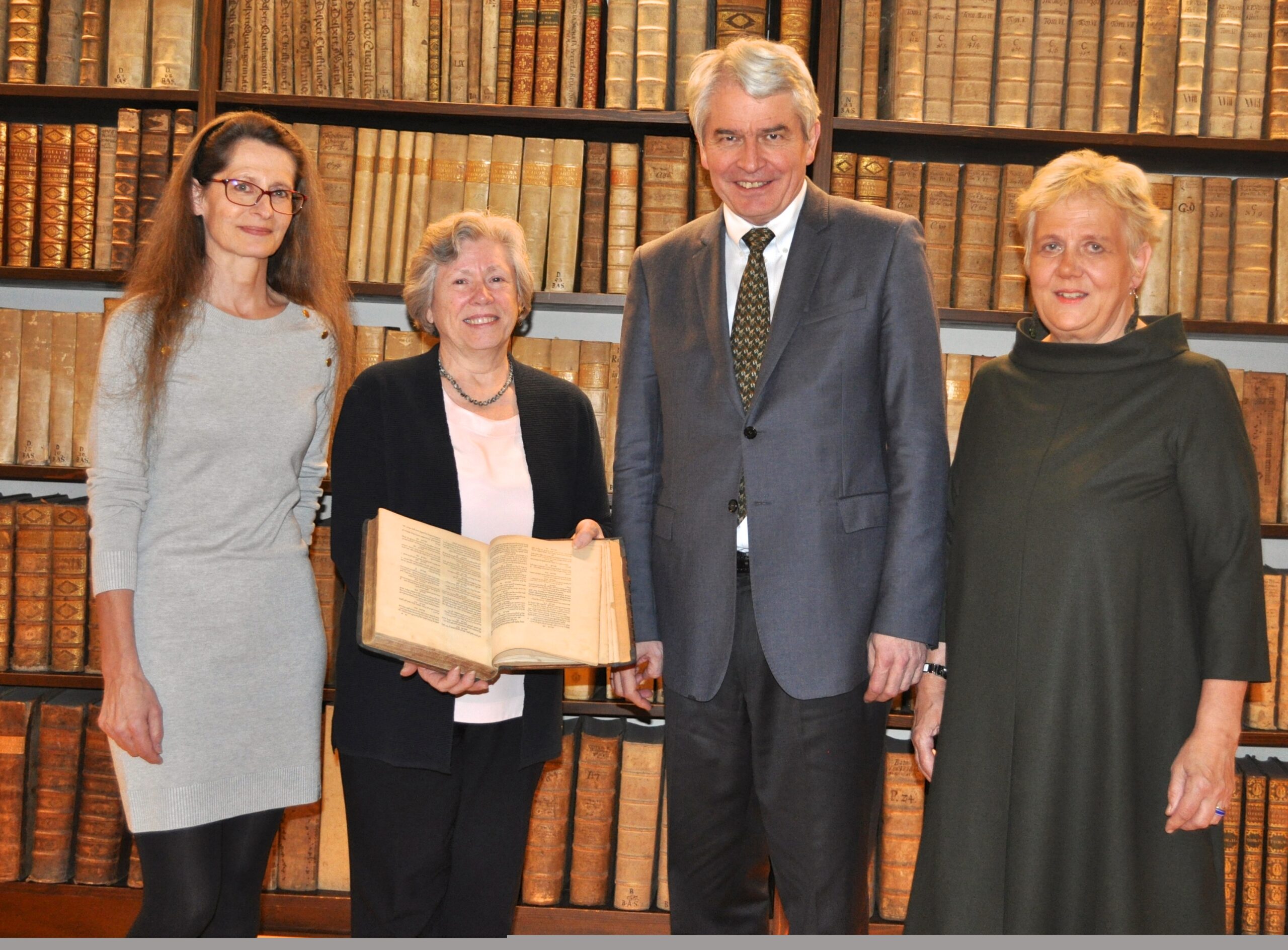
© Foto: Hans Christian Gruber
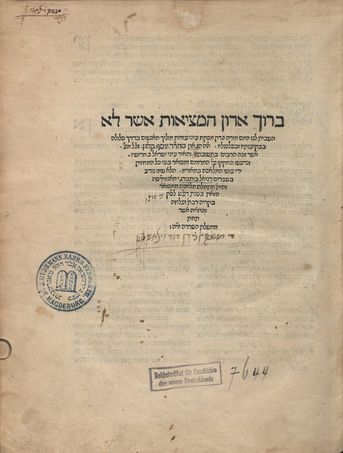
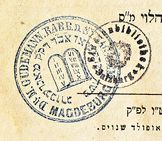
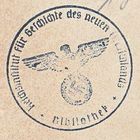
© Fotos: UBS
2018
Borromäum
On April 24, 2018, Rector Univ.-Prof. Dr. Heinrich Schmidinger and the Head of the University Library, Dr.in Ursula Schachl-Raber, handed over 32 books looted during the National Socialist era to Mag. Winfried Penninger, Director of the Archbishop’s Private High School Borromäum, and Prelate Balthasar Sieberer, Rector of the Borromäum Education Center. The state of Salzburg was represented by LRin Mag. Martina Berthold MBA, the musical accompaniment was provided by the vocal ensemble “Vok-Shock” (EB. Privatgymnasium Borromäum) under the direction of MMMag. Moritz Guttmann.
The Archbishop’s Private High School Borromäum dates back to a foundation by Friedrich Fürst zu Schwarzenberg, Cardinal and Archbishop of Salzburg, in 1836. The aim was to guarantee a sound education for future priests. In 1879 the school was granted public rights, and in 1912 it moved to the Parsch.
After the “Anschluss” of Austria to the German Reich in March 1938, there were numerous restrictive measures against the Catholic Church in Salzburg, among others against Catholic private schools. In the case of the Borromeum, there was also a great deal of interest in the premises. More and more rooms were confiscated in favor of the “Reichsnährstand” until the Gestapo issued the final order to evacuate on June 17, 1938. The school had to move into alternative quarters in the private high school St. Rupert in Bischofshofen, which, however, was converted into the “NS Educational Institution Kreuzberg” in 1939.
The books from the Borromeo library, whose size and value have not been handed down, were taken over by the Provincial Archives. One of the archivists selected a part of them for the study library, where about 4,000 volumes and as many school programs were taken over until 1945, but presumably due to lack of personnel they were not systematically incorporated into the collection. Most of them were returned after the war. Why no one thought of the few books that had already been incorporated could not be clarified.
In order to know that the looted books will remain in professional hands in the future and to continue to make them accessible to an interested public, Mag. Penninger decided to give all but two of the books to the University Library as a gift after restitution. These two books will be displayed in a prominent place in the school building of the Borromeum in order to preserve and make visible for future generations the memory of the fate of the school and its books during the time of National Socialism.
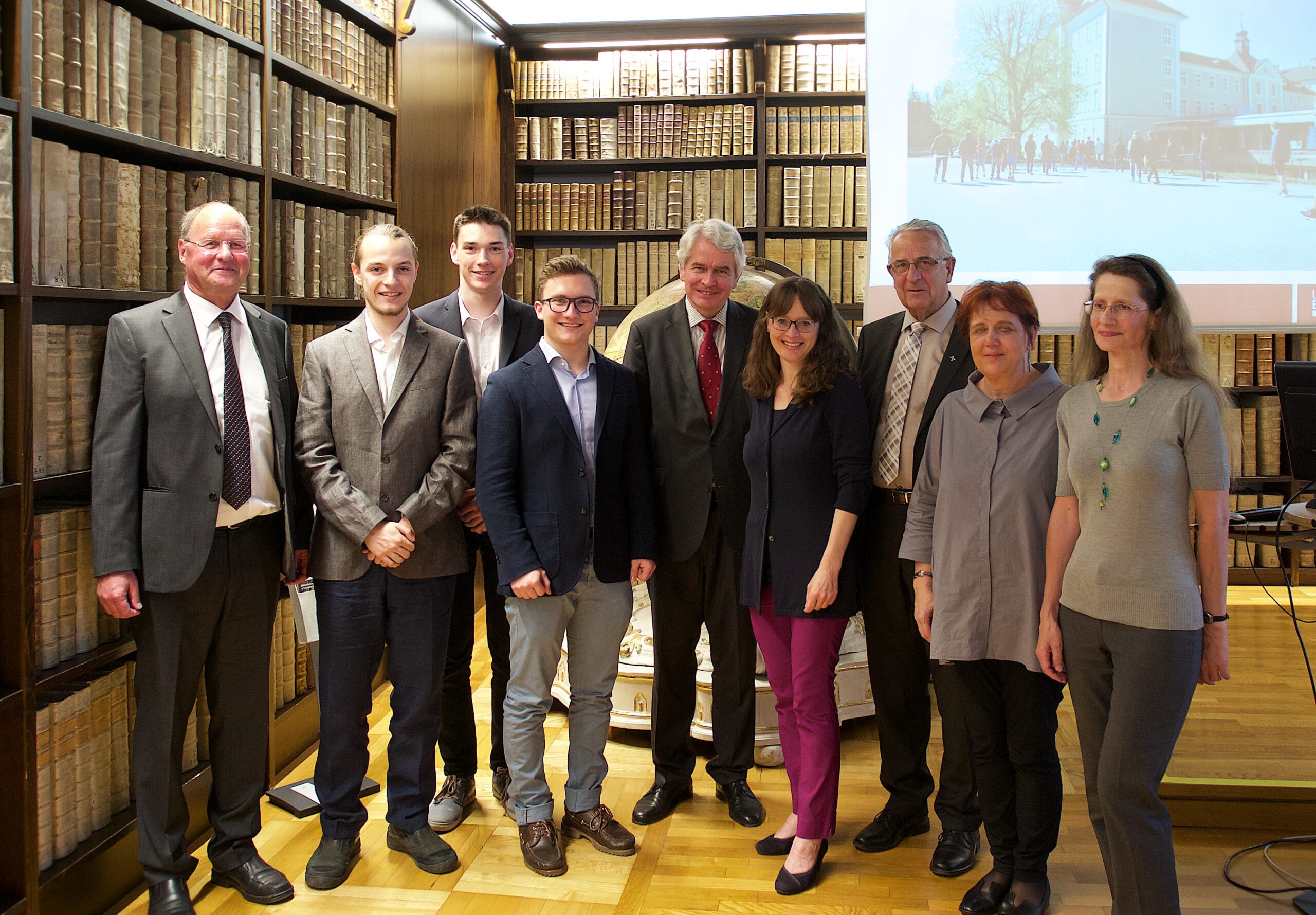
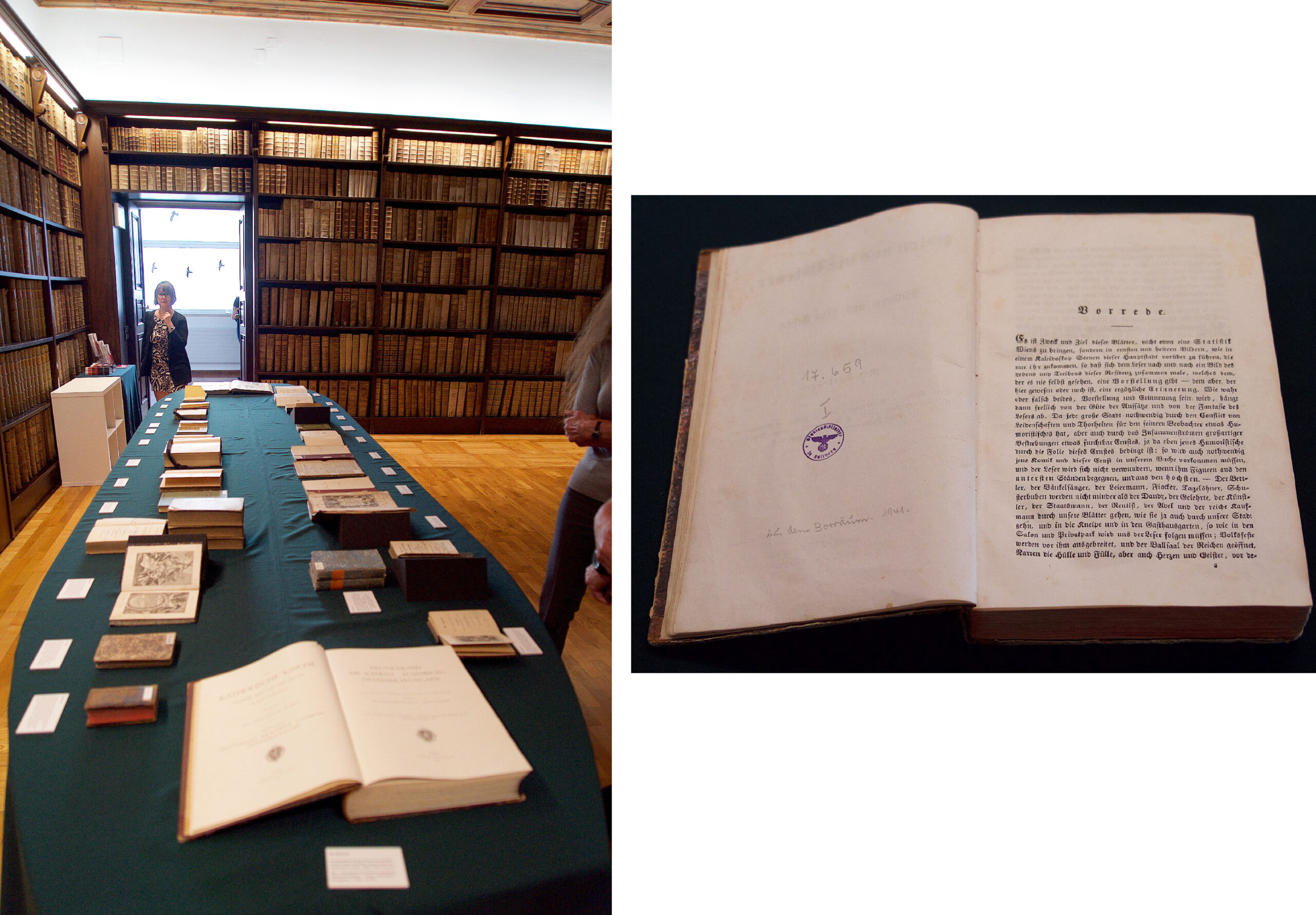
© Fotos: Hans Christian Gruber
2017
Konradinum
On January 31, 2017, 10 manuscripts and 40 printed works were handed over to the State of Salzburg as the legal owner of the care facility by the Rector of the University, Univ.-Prof. Dr. Heinrich Schmidinger and by the Director of the University Library, Dr.in Ursula Schachl-Raber in a ceremony. LRin Martina Mag.a Martina Berthold MBA, LR Mag. Dr. Christian Stöckl and Mag. Dr. Oskar Dohle, Director of the Salzburg Provincial Archives, took over the works for the Province of Salzburg.
The founder of the Konradinum, Konrad Seyde, as a pastor in the 19th century, had experienced the difficult living situation of severely handicapped children at first hand and therefore decided to donate his retirement home in Eugendorf with garden and securities for the “improvement of public welfare” of severely handicapped children and young people. Konrad Seyde himself did not live to see the opening of his institution in 1907. The Province of Salzburg, as the endowment authority, entrusted the Congregation of the Sisters of Mercy of St. Vincent de Paul with the care of the children. Seyde’s “rich collection of books” was to remain in the house forever, according to the founder’s will.
The path of the books
After the “Anschluss” of Austria and the confiscation of the building by the National Socialists, the books of the Seydes Library remained unnoticed for the time being. It was not until 1940 that they were offered to the director of the Study Library, Ernst Frisch. He took over a number of volumes – the rest were to be given to a paper stamper “for the purpose of beneficial use”. The selected volumes were marked “Gift of the Conradinum” and found their new place in the stacks of the Study Library. Frisch judged the diaries of Konrad Seyde from the years 1853-1858 to be the “most valuable piece of the entire collection.” Of the ten manuscripts from the 19th century, nine were written by Seyde himself and some were lovingly decorated with drawings. The printed works date from the 17th-19th centuries, some of them bearing the ownership mark of an archbishop. They testify to the broad interests of their former owner, which ranged from Salzburg local and art history to ancient literature, the French Revolution and the “Linz Cookbook”.
Although no ownership notes point to the former owner, research work at the University Library shed light on the origin of the works. They were restituted, as they did not legally come into the possession of the university library, and will be housed in the Salzburg Provincial Archives in the future.
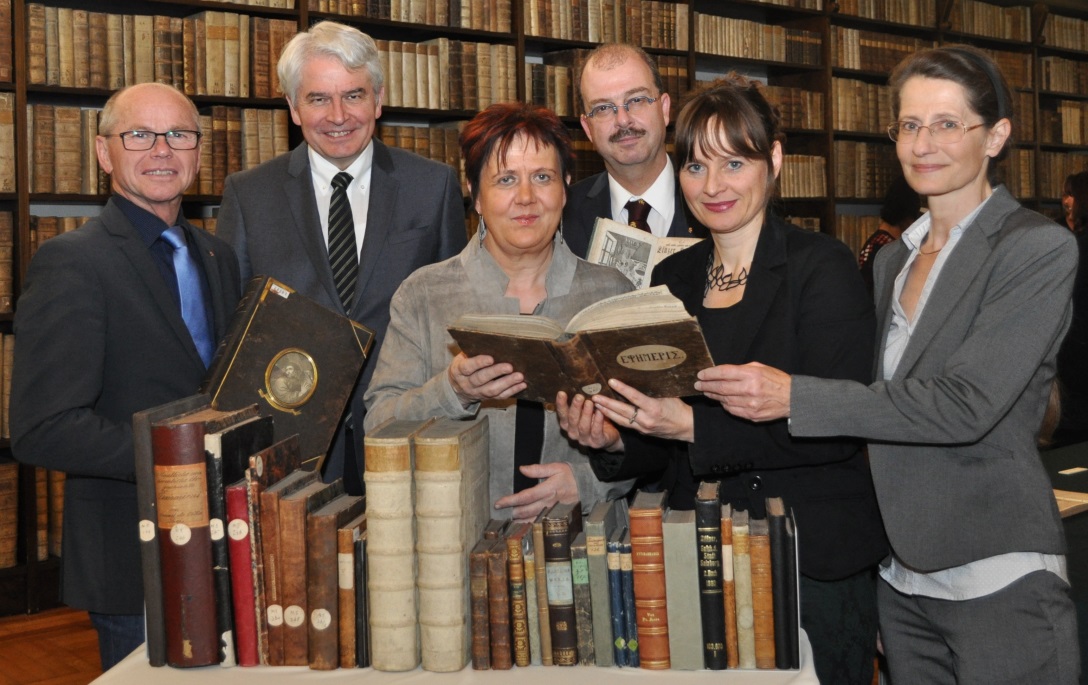
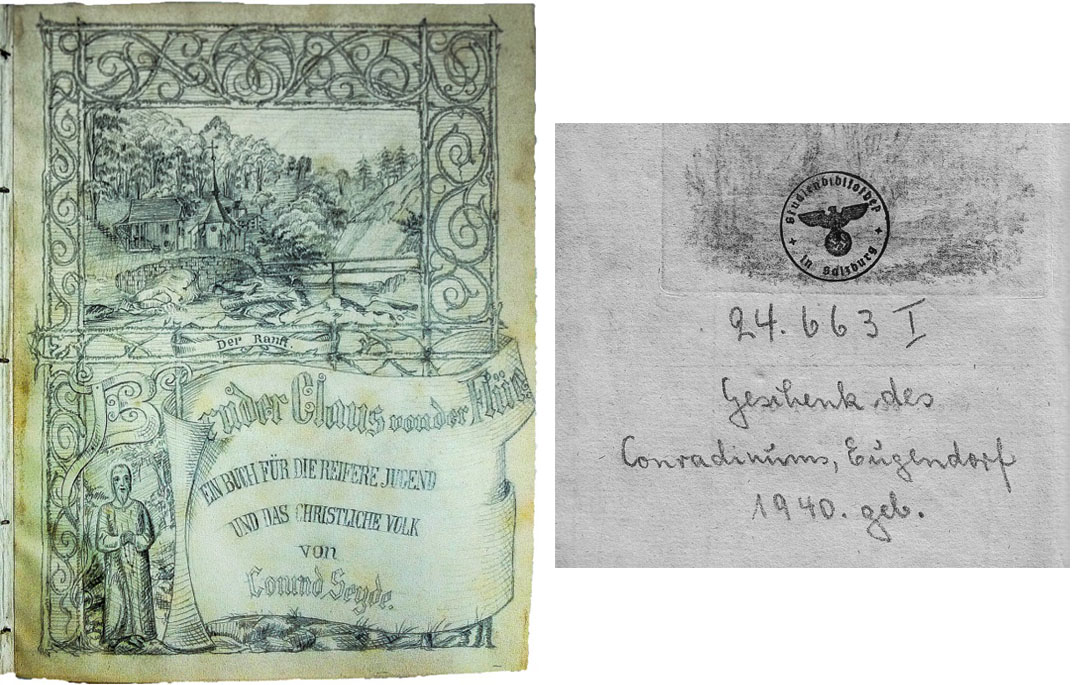
(Fotos: © UBS)
2016
Archabbey St. Peter
On January 27, 2016, the university library of Salzburg’s Paris Lodron University restituted 55 prints to the monastery of St. Peter in Salzburg. The prints came to the library during the Nazi era, when the then director Ernst Frisch had been appointed administrator of the library of the dissolved Archabbey of St. Peter.
There were no notes of ownership by the monastery on the prints themselves. The first indication that they were looted property is due to the meticulousness of Ernst Frisch, the head of the library at the time. He noted in the graphic catalog of the university library about the origin of the sheets: “From St. Peter’s”. A further and clear indication was provided by the signatures, which narrowed down the integration of the graphics into the holdings of the then Study Library to the years between 1944 and 1945. One graphic could be immediately and clearly identified as looted property: a playing card from the 16th/17th century. In the graphic catalog, the library director noted, “The card was found by me as a bookmark in a St. Peter volume. 1943”.Frisch had been entrusted with the administration of the monastery library after the dissolution of the Archabbey of St. Peter by the National Socialists on January 7, 1941. He hoped that the valuable manuscripts and incunabula would increase the importance of “his” library, but the most valuable holdings had to be brought to safety from the air raids in the salt mine on the Dürrnberg during the war years.
There are no written documents about the returns after the war; they were probably agreed on the “short way”, i.e. verbally. Therefore, it is also not documented why these graphics in particular remained in the university library. It was only in the course of provenance research at the University Library of Salzburg that the rightful owner was determined and the graphics were restituted to the Abbot of the Archabbey of St. Peter, Archabbot Dr. Korbinian Birnbacher OSB, on January 27, 2016 by the Rector of the University, Prof. Dr. Heinrich Schmidinger, and the Head of the University Library, Dr. Ursula Schachl-Raber.
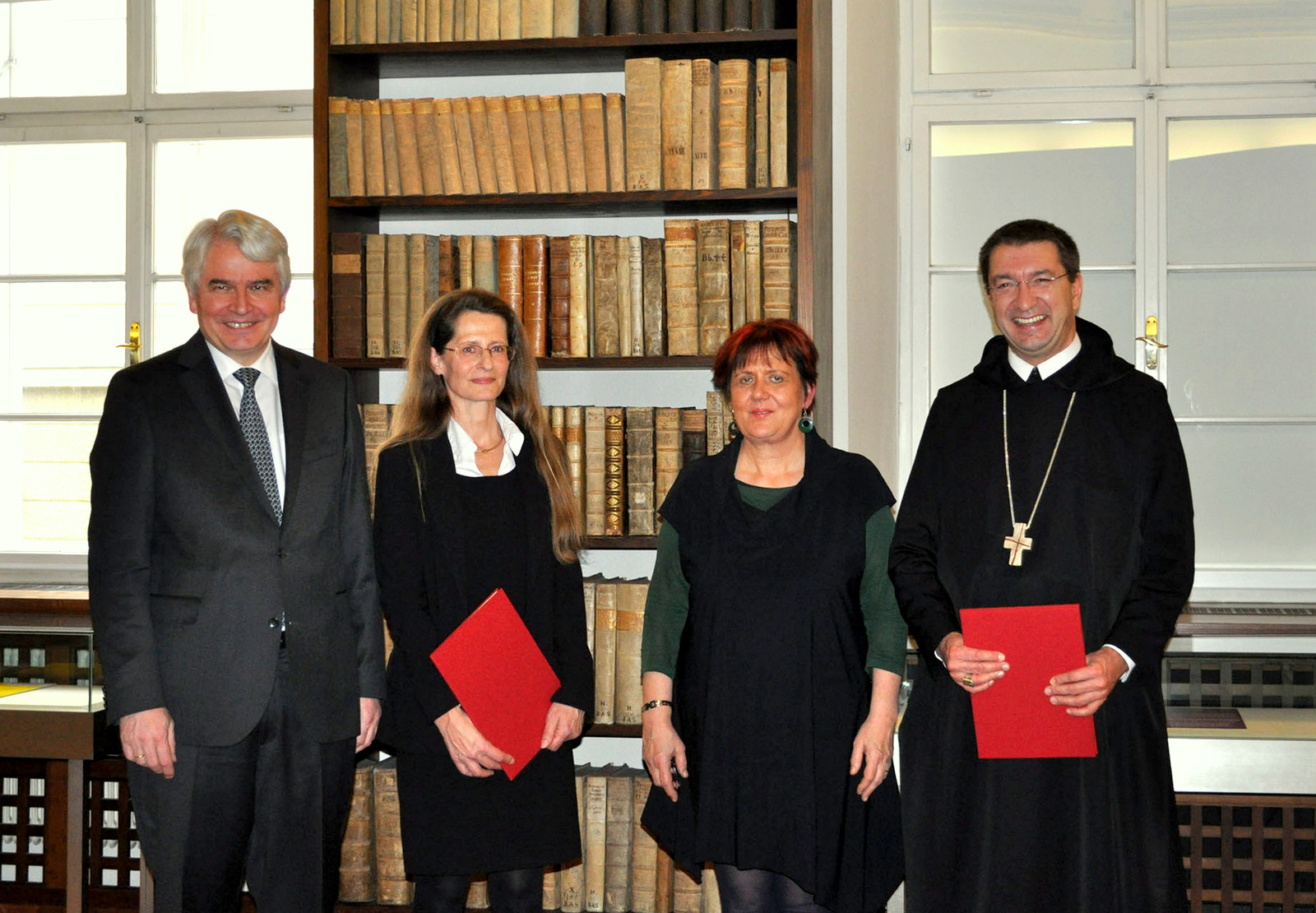
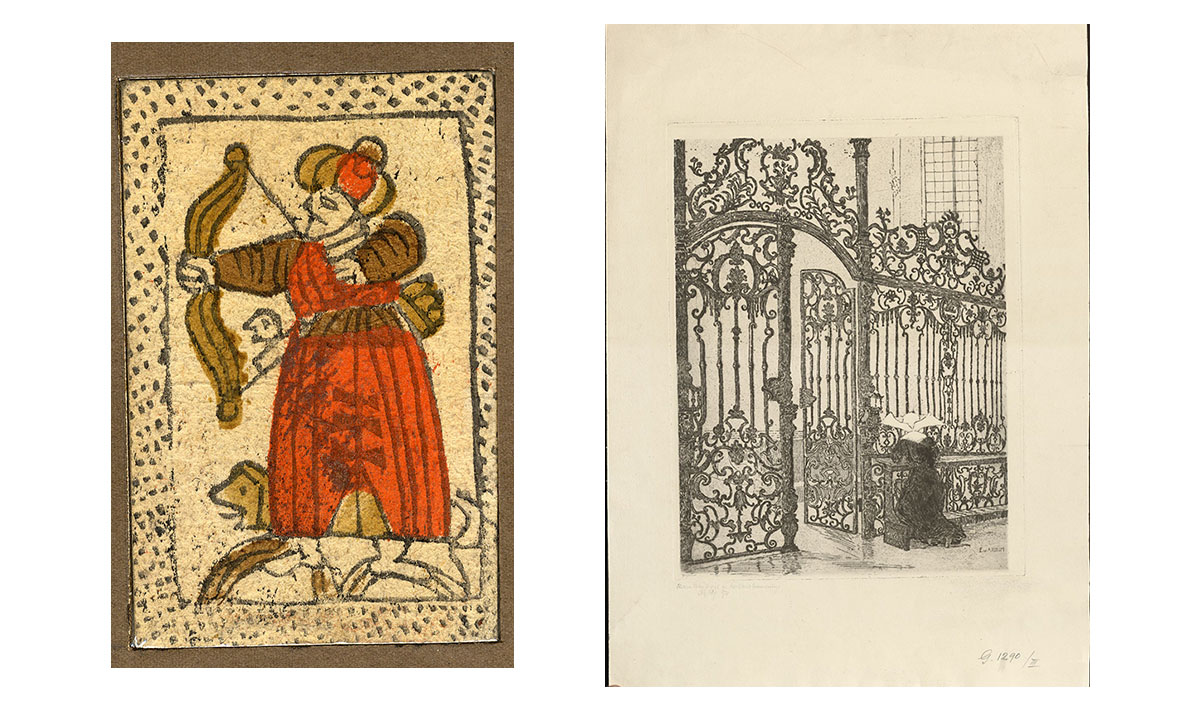
(Fotos: © UBS)
2014
Viennese Technical Publishing House Brothers Suschitzky
In November 2014, a book was restituted to 102-year-old Mr. Wolf Suschitzky.In the main library, two ownership marks of the Vienna Technical Publishing House of the Suschitzky brothers were found in the 1907 pocket dictionary of the Danish and German languages of the Langenscheidt publishing house: a stamp and a bookplate. The stamp can only be read indistinctly, in the case of the bookplate, an attempt had been made to tear out the ownership information. As a result, the name and address are only fragmentarily preserved, but the motto and motif are still clearly recognizable.
In the fall of 1901, the brothers Philipp and Wilhelm Suschitzky founded an “assortment and antiquarian bookshop” in Vienna X, Favoritenstraße 57, which was expanded in 1910 by the founding of the Wiener Technischer Verlag. Her commitment to social democracy, women’s rights, pacifism, or social and sexual reforms got her into trouble already in the 1920s. After the crushing of democracy, Wilhelm Suschitzky committed suicide on April 18, 1934, and his widow Adele Suschitzky took over his share of the business. She was able to flee to London after the “Anschluss” of Austria to join her children Wolfgang Suschitzky and Edith Tudor-Hart. Philipp Suschitzky fled to France with his wife Olga. Both were deported from there to Auschwitz in 1942 and murdered.
The bookshop and the publishing house were liquidated, the books sold.The Salzburg Study Library bought the dictionary from a travel bookseller in 1953. It cannot be traced how this person came into possession of the book, but there is a suspicion of Nazi looted property. Therefore, the University Library has restituted the book to Wilhelm Suschitzky’s son, Mr. Wolf Suschitzky, who still lives in London.The handover took place in London in November 2014. Mr. Suschitzky was particularly interested in the restitution dossier. Since he would like to reduce the size of his library, he subsequently donated the book back to the university library.
Wolf Suschitzky, London 2014 (Foto: © Brigitte Mayr)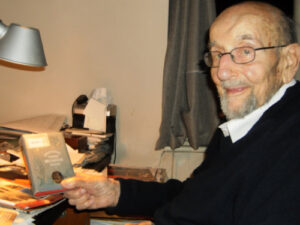
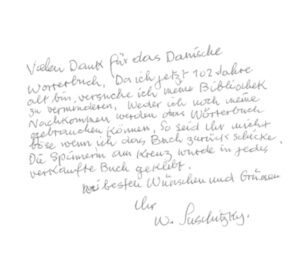
2014
The actor and author Miguel Herz-Kestranek receiveda book of his grandfather back
A special bookplate was found in the course of Nazi provenance research in a book from 1912 – the bookplate of Dr. Eugen Herz, an Austrian industrialist who had converted to Catholicism at the age of 24.
His assets, including a villa in St. Gilgen, were “Aryanized” in 1938, i.e. expropriated by the National Socialists, and his library was “released for sale” in 1940. Herz lived at Chiemsee until his death in 1944; his son Stefan Herz-Kestranek, the father of Miguel Herz-Kestranek, emigrated and returned to Austria after the war. How the Studienbibliothek (predecessor of the University Library) came into possession of the book Der Deutsche Lausbub in Amerika by Erwin Rosen can no longer be traced, as the less than informative inventory book entry from 1953 only states “old stock” as its origin.
It is therefore on record that the library of Eugen Herz was unlawfully disposed of. Furthermore, a lawful acquisition by the library cannot be proven beyond doubt. Since there is therefore a suspicion of Nazi looted property, the Salzburg University Library has decided to restitute the book to Eugen Herz’s grandson.Miguel Herz-Kestranek was pleased to receive the book from the director of the University Library, Ursula Schachl-Raber – for him a small piece of the puzzle in the reconstruction of his grandfather’s collection.
The book has been digitized with permission from Miguel Herz-Kestranek and is available in full text at the following link.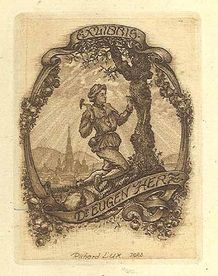
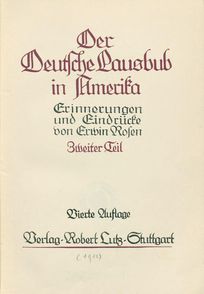
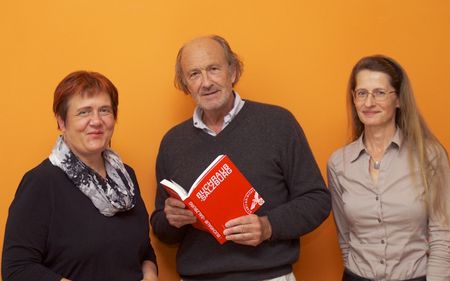
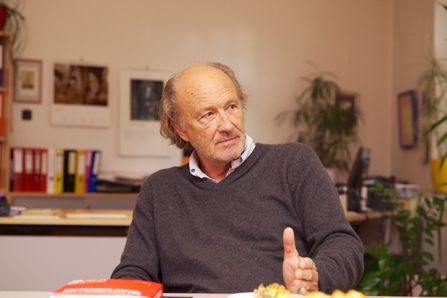
(Fotos: © UBS)
2012
The abbot of Michaelbeuern Monastery took books and prints back into the possession of his monastery library
For the University Library of Salzburg, researching its history of the years from 1933 to 1945 and searching for Nazi looted property in its holdings is not merely an end in itself. On October 15, 2012, it set a first and clear sign of reparation with a public restitution in the context of the presentation of the publication “Book theft in Salzburg.
The abbot of Michaelbeuern Monastery took books and prints back into the possession of his monastery library and thanked them in a short speech for their restitution. All objects are marked as restituted Nazi looted property in the catalogs of the university library and can be viewed as digital copies.
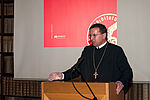


(Fotos: © UBS)




